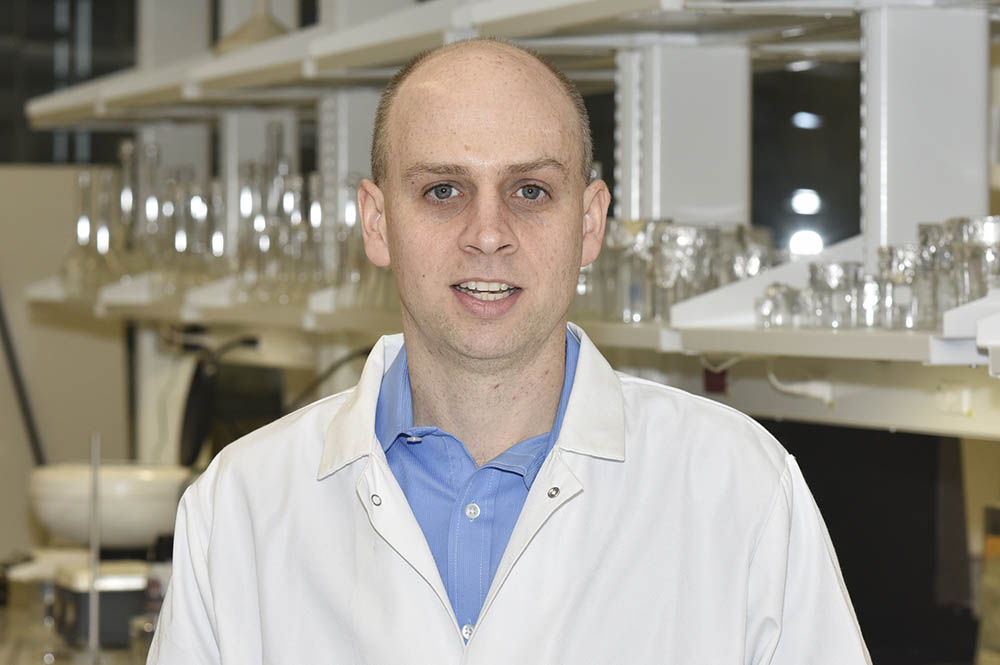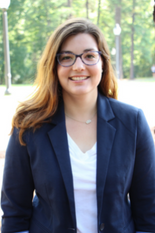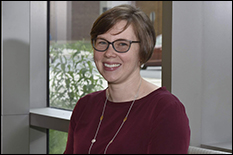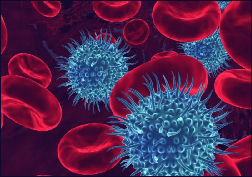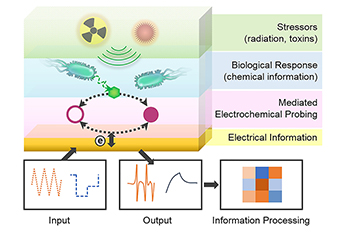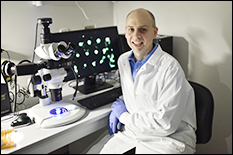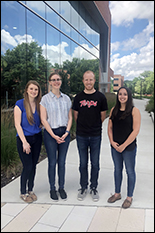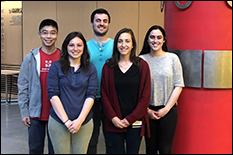News Story
2014 Fischell Festival Tackles Key Topics in Biomedical Emergency Response
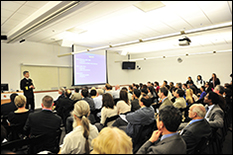
Rear Admiral Stephen Redd (CDC)
On Oct. 16, 2014, the University of Maryland Fischell Department of Bioengineering (BioE) held its eighth Fischell Festival, which this year kicked off the second annual A. James Clark School of Engineering Mpact Week event.
In support of this year’s Mpact Week theme of “Disaster Resilience,” the 2014 Fischell Festival centered on topics in Biomedical Emergency Response, including responses to Ebola and other public health threats, sample preparation for point-of-care infectious disease diagnostics, influenza pandemic preparedness, and synthetic vaccines to promote immunity or tolerance.
Rear Admiral Stephen Redd, Centers for Disease Control and Prevention Director of the Influenza Coordination Unit, served as this year’s keynote speaker. A medical epidemiologist, Redd is responsible for managing and directing CDC’s efforts to prepare and respond to pandemic influenza; however, rising concerns about the potential spread of Ebola both abroad and within the United States have drawn attention to the value of Redd’s expertise in investigating outbreaks of diseases and devising diagnosis and treatment strategies.
Just two weeks after the first domestically diagnosed Ebola patient in the United States was confirmed, Redd spoke at the Fisichell Festival about the U.S. government strategy to control the outbreak, mitigate secondary impacts, encourage international participation in prevention and treatment efforts, and build a long-term capacity to detect and respond to cases of Ebola.
Redd also discussed the effectiveness of airport screenings and the reason flights with passengers originating from the affected countries in Africa have not been – and should not be – canceled.
“There are actually no planes coming directly to the United States from either of the [primary] affected countries,” Redd said. “[Those coming into the United States from affected countries] are individuals that have traversed through Europe. They are not directly coming to the United States, and that actually adds a layer of difficulty to monitoring. We’re looking for a needle in a haystack.
“The commercial air system is actually very important to bring supplies to those countries and to bring volunteers to provide health care,” he continued. “If we prevent that ability to also bring people out of [West Africa] after their period of responding is over… that capacity [to bring them home] is extremely important to fighting the problem in West Africa.”
When asked about lessons learned on how to effectively limit the spread of Ebola, Redd commented on how past treatment and prevention campaigns – such as the CDC’s work eradicating polio in western Africa – have provided direction for identifying and tracking Ebola cases in at-risk countries in Africa. However, one major wild card remains the lack of an effective vaccine to prevent the spread of Ebola, Redd said, noting that because of this, there remains a critical role for meticulous infection control.
Touching on another key issue with preventing the spread of Ebola – as well as influenza – University of Maryland School of Public Health Professor Don Milton discussed the different modes of disease transmission and the importance of differentiating each. Milton identified the three – contact, large droplet spray, and aerosol transmission (airborne) – and explained why identifying a disease as “airborne” implies significant changes in public health recommendations.
To shift the discussion from prevention and treatment to diagnostics, BioE Associate Professor Ian White discussed his lab’s recent work with infectious disease diagnostics.
“To improve patient outcome and to prevent the spread of bacterial pathogens, there is a need for rapid diagnostics of bacterial infections,” White said. “The gold standard today is to perform bacterial cultures. With this approach, pathogen identification may take from two to seven days and, in some cases, false negatives occur.”
Recognizing this, it is widely accepted that polymerase chain reaction (PCR) can be utilized to identify pathogen species – and, in some cases – pathogen strain, he said. While the PCR reaction itself is rapid, the sample preparation for the PCR-based identification of bacterial pathogens is labor-intensive and must be performed by a technician. As a result, PCR is rarely employed for rapid diagnostics at point of care.
“Our research team has partnered with industry to develop low-cost microfluidic solutions for automated sample preparation for used with PCR-based diagnostics,” White said. “In particular, we focused on bloodstream infections, which present a particularly challenging sample matrix to prepare.”
In his presentation, White discussed microfluidic solutions for high throughput whole blood preparation and cell sorting, cell lysis, and DNA purification, and how direct integration of these technologies with microfluidic PCR will lead to a rapid and automated solution for infectious disease diagnostics that can be employed at the point of care.
Revisiting the discussion of the importance of vaccines in promoting immunity or tolerance, BioE Assistant Professor Christopher Jewell introduced two strategies being developed to study and exploit the interactions between biomaterials and immune cells and tissues.
“Vaccines and immunotherapies have generated some of the largest impacts on human health in history, but a fundamental challenge now facing the field is how to control specific properties of immune responses elicited by vaccines,” Jewell said.
One approach involves direct delivery of synthetic vaccine carriers to lymph nodes, the “command center” that coordinates immune response.
“[The Jewell Research Lab at the University of Maryland] has combined direct lymph node injection – which has recently demonstrated great potential in human clinical trials – with biomaterials to establish a platform to directly study the link between material properties and lymph node function. We have also adapted this idea to locally engineer the lymph node environment to generate rapid and potent immune responses.”
To better control the specific properties of these responses, Jewell’s lab is incorporating signals in biomaterial vaccine formulations that promote immune stimulation or immune tolerance, depending on the cues included in the vaccines.
“These approaches could generate new knowledge of how material properties bias local and systemic immunity and contribute to new therapeutic vaccines that combat cancer or autoimmune disease,” Jewell said.
Following each of the day’s presentations, Fischell Festival attendees were invited to this year’s Inventors Fair, featuring seven UMD-related inventions and companies, including Remedium, Diagnostic anSERS, Otomagnetics, and BioFactura. Attendees were also invited to browse nearly two dozen research posters, many of which directly correlated with this year’s theme of “Disaster Resilience: Biomedical Emergency Response.”
More information and multimedia from this year’s Fischell Festival will be made available soon on the Fischell Festival website, as well as on www.bioe.umd.edu.
Published October 28, 2014

